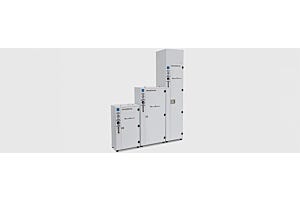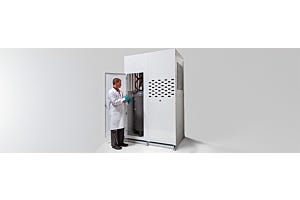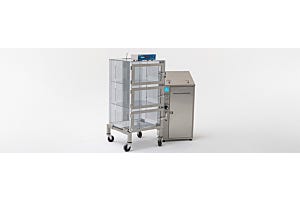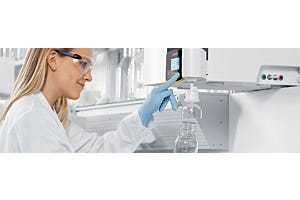Desiccators, sometimes called dry boxes, provide a low-humidity atmosphere for storage of items and materials that would otherwise be damaged by moisture. Desiccators are used for a wide range of applications across several scientific disciplines.
In chemistry and biology, desiccators are often used to store hygroscopic reagents and chemicals. Keeping these compounds in a low-humidity environment drastically increases their shelf life. In semiconductor research and manufacturing, dry storage is often employed to prevent damaging oxidation of wafers and other components that can lead to immediate or latent failures.
In order to achieve a low relative-humidity (RH) atmosphere for storage within a desiccator, two storage techniques are commonly used: desiccant-based and nitrogen-purged.
Benefits of Desiccant
A desiccant is a hygroscopic material, often silica gel. We’ve all seen “pillow packs” in pill bottles and electronic packaging. The desiccant absorbs moisture within the desiccator chamber to reduce the humidity. Desiccant-based storage is often coupled with a vacuum pump. The moisture-laden ambient air present in the closed environment is removed, with moisture further reduced and maintained with the hygroscopic desiccant. This method of dry storage is an economical and simple solution for dry storage of reagents and chemicals where precise control of humidity is not required.
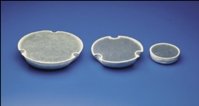
Desiccant cartridges
Desiccant-based storage has several advantages. First, this method can increase the shelf life of costly chemicals and reagents that are labile under even slightly humid conditions. Additionally, desiccant-based storage is less costly than more complex nitrogen-based storage (compare the price of nitrogen tanks with silica gel). Lastly, desiccant can be dried by applying heat in a laboratory oven and reused, which further reduces cost.
What are the drawbacks to desiccant-based storage? First, it does not allow for precise control of humidity levels within the chamber. Also, because removal of moisture from the environment is a passive process, a substantial amount of time is required to achieve a dry environment. If the chamber is opened and exposed to ambient conditions, moisture is reintroduced, increasing the amount of time required to reach the ideal environment.
Due to these drawbacks, desiccant-based storage is not recommended when storing materials that need to be accessed frequently. In chemistry and biology labs, desiccant is an economical and effective solution for storage of hygroscopic reagents. Pathology and clinical labs also commonly use this technique for archiving formaldehyde-fixed and paraffin-embedded tissue samples.
Nitrogen-Based Storage
The use of desiccators purged with nitrogen provides a low-moisture climate for a wide range of applications. This process involves the introduction of pure nitrogen into the chamber from an external source. The addition of nitrogen effectively replaces a humid (containing H2O molecules) atmosphere with an inert, dry atmosphere (containing N2 molecules).
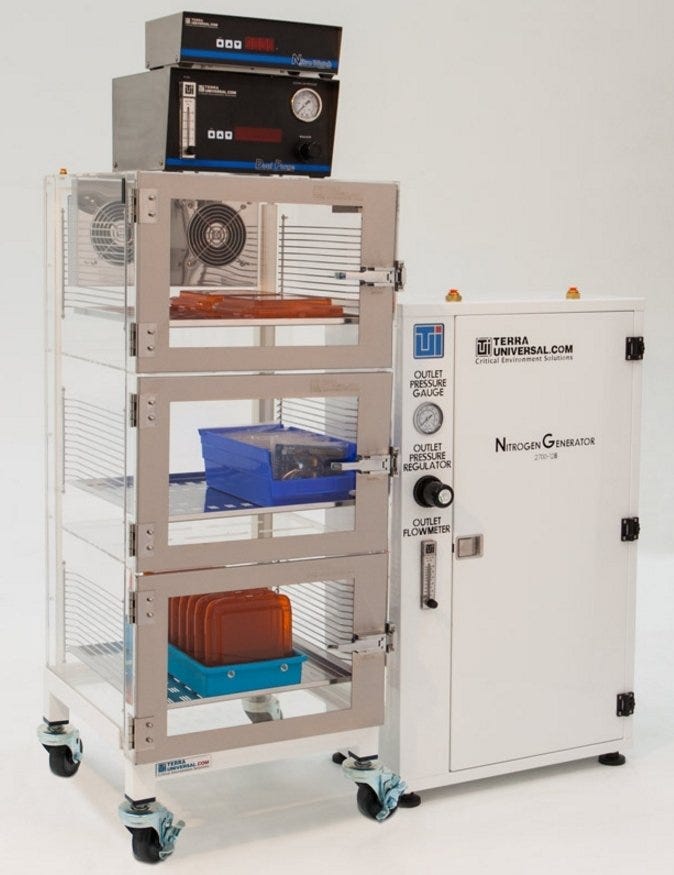
Desiccator with automated control system and nitrogen generator
Nitrogen is fed into the chamber through a tube, and controlled by a simple flow-meter. It can also be managed through equipment that monitors the chamber’s relative humidity level and adjusts flow accordingly. Nitrogen-based desiccator storage is often adopted in high-tech semiconductor research and manufacturing facilities to precisely control the %RH during storage.
One notable advantage of nitrogen-based dry storage is the ability to rapidly lower the relative humidity the chamber. When stored materials need to be accessed frequently, this is of particular importance. The rapid recovery time minimizes the exposure of the material to moisture more efficiently compared to desiccant-based storage.
Using a combination meter/valve, humidity levels can be monitored, and nitrogen flow rate adjusted, to maintain the desired set-point. By following this method, labs may also notice a reduction in their use (waste) of process gas. Therefore, nitrogen-based dry storage is an ideal solution for applications in the semiconductor industry where components are accessed frequently and need to be kept at a tightly controlled %RH to prevent oxidative damage.
To be fair, there are a few drawbacks to using nitrogen for dry storage of materials. First, an external nitrogen source is required to operate the desiccator. These can be tanks supplied by a third-party, or a nitrogen generator which requires a source of compressed air. This will increase the cost of operation compared to desiccant-based storage. To help address this concern, labs can use automated control systems to monitor %RH levels and control the flow of nitrogen. When humidity is low, nitrogen use is minimized by reducing the flow of nitrogen, and vice versa when %RH rises above the programmed set-point. By automating this process, fewer man-hours are needed to achieve the desired result and nitrogen is used sparingly.
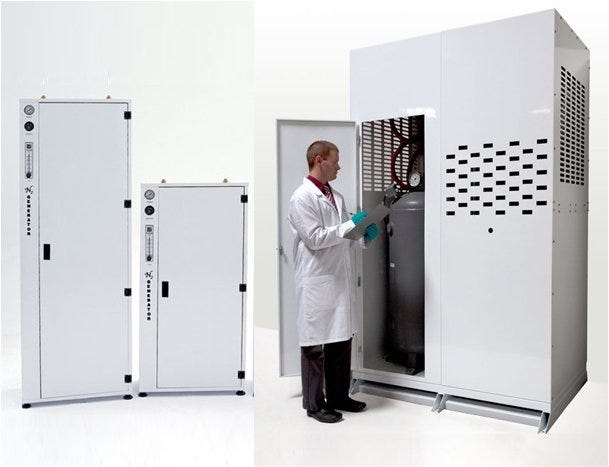
Nitrogen generators
While an in-house nitrogen generator requires an initial capital expenditure, the future savings may warrant the expense; pure nitrogen will be available quickly and cheaply. These generators feed pressurized air through a selective membrane to extract nitrogen. For these reasons, nitrogen-based dry storage is often used in labs with a large number of desiccator storage units, applications that require frequent access to stored materials or where precisely controlled humidity levels are critical.
To learn more about nitrogen generators, visit Terra’s website. Or, click here for desiccator chamber options for moisture-free storage.




